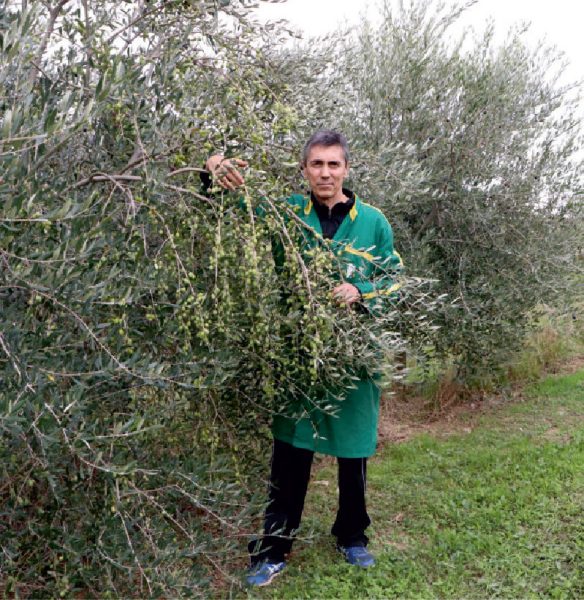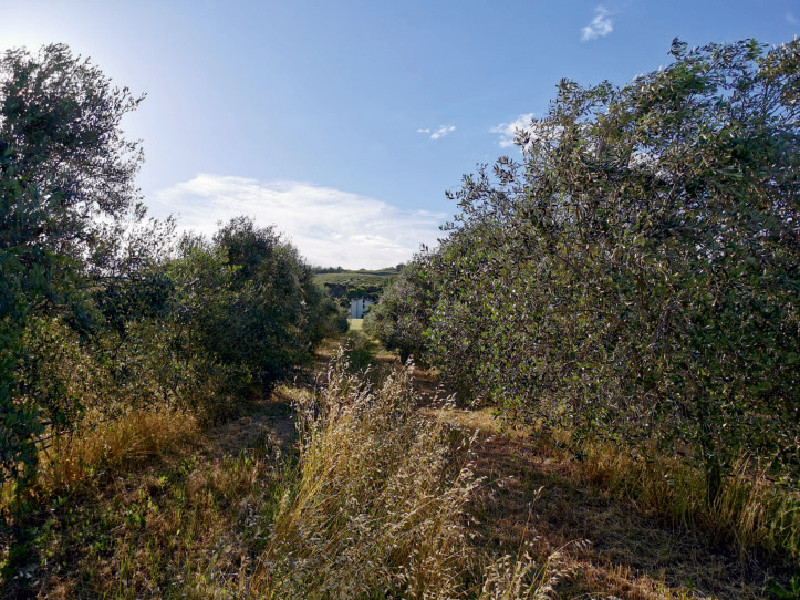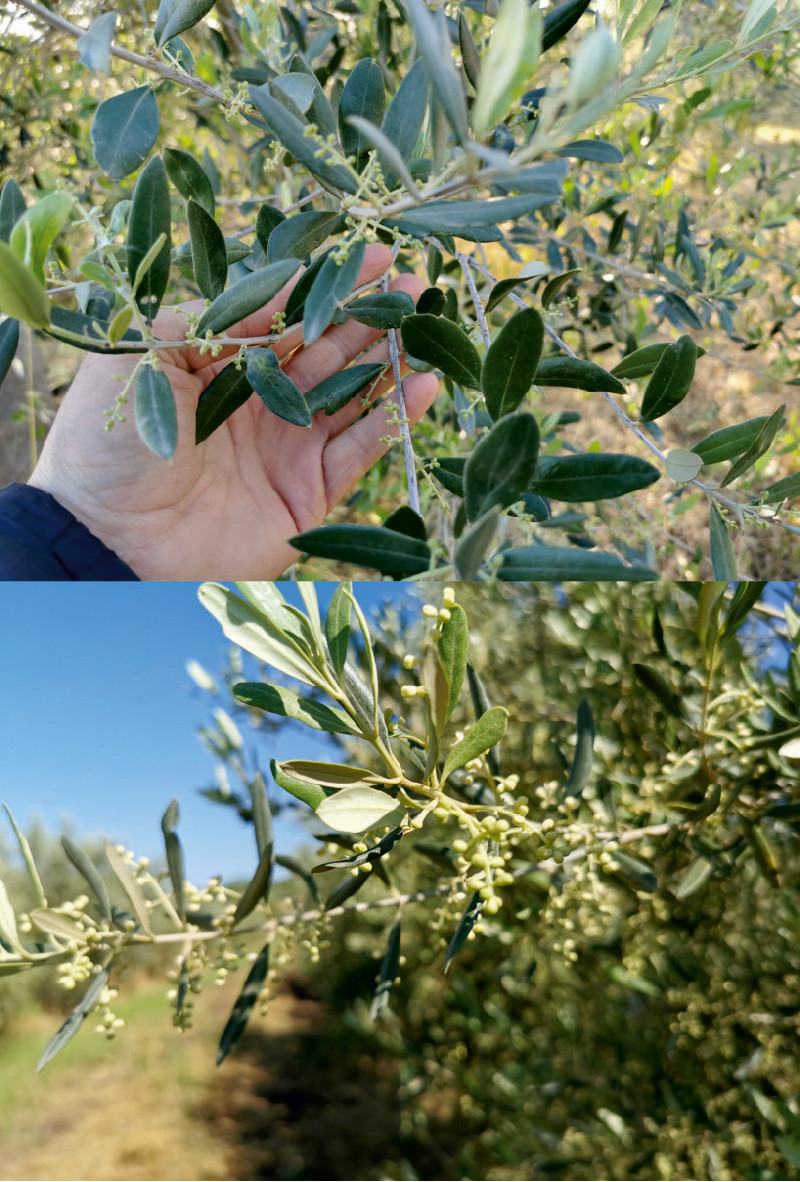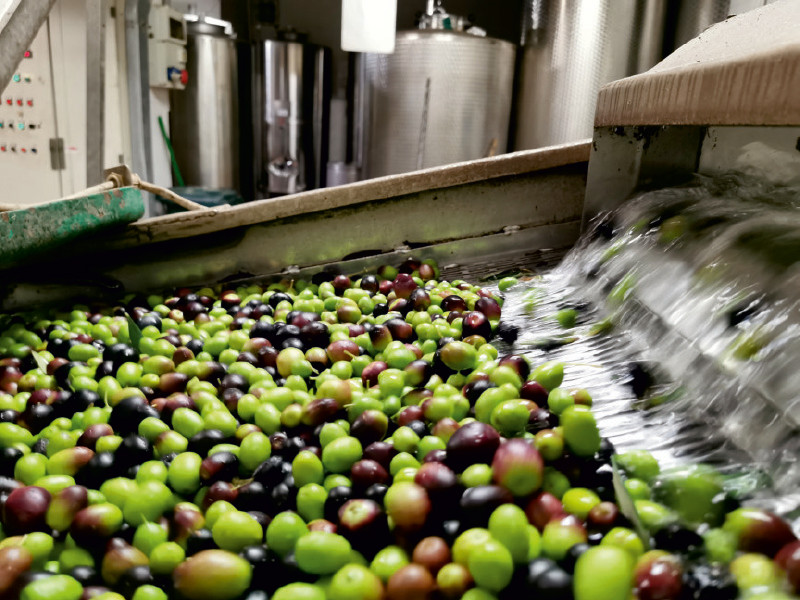

Paganelli Farm and Oil Mill: 50 years of passion and innovation
Our family has always been in search of quality, while respecting the environment. The new two-stage decanter separates the oil directly from the ground olive pulp, without using mains water, only the vegetation water naturally present in the olive, which is rich in antioxidants. Once the oil has been extracted the olive pulp (pomace) and the vegetation water together are destined for BIOGAS production plants.
Today, the old storage tanks for olive water and mains water (no longer used), are used to recirculate rainwater from the mill's roof, terraces and forecourt. The rainwater is then used for the very important emergency irrigation of our olive groves, which is indispensable if we want to obtain the highest quality oil.
Extra Virgin Olive Oil
A good extra virgin oil is unique because of its distinctive characteristics. Various factors such as variety, territory, climate, soil and especially the time of harvest (degree of ripeness of the olives) influence the final characteristics of an oil.
It is necessary to start considering extra virgin olive oil as a fundamental ingredient that has the power to enhance, accompany, enrich the flavours and aromas of our dishes. A good extra virgin olive oil immediately captivates the sense of smell. It is indeed with the nose that we perceive the intensity of the fruitiness. In fact, whether it is ripe fruity or green fruity, it will remind us of the fruit: olive.
Each oil will release more or less intense notes of odours and aromas with vegetal overtones. The next action is the tasting and with the mouth we will be able to perceive above all the bitterness and spiciness. Both sensations are absolutely positive (antioxidants) and can be detected with different intensities depending on the oil being tasted. An oil produced from olives not fully ripe and harvested in mid-October will have intense spicy notes with a perception of bitterness (more or less intense depending on the variety).
An oil made from fully ripe olives harvested in November will have a delicate flavour with slight spiciness and predominantly sweet.
Discover the production cycle of our oil
Risveglio vegetativo
In March, the vegetative awakening of our olive grove begins.

Esplosione della fioritura
At the end of May, blossoming will begin and in early June, the olive trees will be whitewashed with beautiful, characteristic clusters of small flowers.

Allegagione
This is one of the most important phases in the life cycle of the olive tree: around the 10th of June, the transformation of the fertilised flowers into fruit, tiny olives, takes place.

Accrescimento della drupa
During June, July and August, the olive must have all the elements necessary for proper growth (water and nutrients).

I primi di ottobre l’oliva è pronta per l’inizio della raccolta
Inoliation is the most important of the ripening stages of the olive fruit (the olive or 'drupe'). In this phase, the increase in the lipid component of the fruit occurs. The fruit is enriched with oleic and linoleic acid: fundamental elements for the oil yield at the mill and for the quality of the oil itself. It mainly takes place from late August to early October, and it is very important that it is well supported by good summer irrigation during the growing phase. The drip irrigation system with which our olive groves are equipped is very important.

Much of the water used for irrigation comes from our rainwater storage, retrieved from the roofs and yard of our oil mill (6000 quintals of rainwater).
With the same system, by means of organic fertigation, the plants are given all the necessary nutrients to support good inoliation and final quality of the extra virgin oil.
La raccolta
Harvesting starts around 10 October and lasts until around 10-15 November. Using electric shakers, the olives are dropped onto the nets. The nets, which are 200 metres long, are spread out and harvested quickly by means of picker rollers driven by our tractor. This makes harvesting faster and enables the olives to be processed into oil within hours of being picked, which is a great advantage for quality.

La produzione nel nostro frantoio aziendale.
The olive arrives at the mill shortly after the harvest. The first operation is proper defoliation and then a good washing to prepare the olive for pressing.

Gramolazione
After pressing, the kneading phase is necessary for about 20-30 minutes. This is a slow stirring of the ground olive paste; its purpose is to break up the emulsion between water and oil and make the oil micelles flow into larger droplets that tend to separate spontaneously from the water.

Separazione finale dell’olio
After the kneading phase, the oil is finally ready to separate from the olive paste. This is done by means of a machine called a 'decanter', in a single operation. Our two-stage decanter separates the oil without the addition of mains water, using only the vegetation water naturally present in the olive (which is very rich in antioxidants), with a great advantage for the environment and for the quality of the oil produced.




